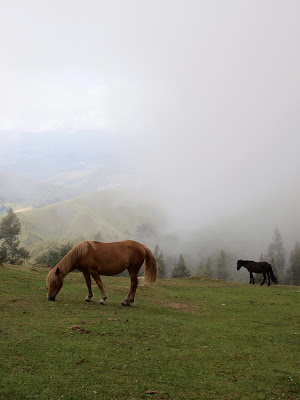
Anika is growing into a big girl. We are very proud of her. This 4th Advent she played a role in the school's Krippen Spiel. She had memorized four stanzas of poetry beforehand and we helped her practice them at home. Walking to the church for the Krippen Spiel Anika said she had forgotten a line. I told her don't worry it will come back to your memory, or if not a teacher will help you, etc. I thought Ani would recite her lines as one of many kids all in a row sharing lines from the poem. The Krippen Spiel began with a violin perfomance, and then the smaller kids took the stage/alter. Midway through their song they stop and I see Anika get up by herself, take the microphone and clearly and loudly and with rolling 'R's recite the first stanza of her poem. After she finishes the little kids sing some more, pause again and Anika reads her next stanza. Ani did it perfect!!! and with flourish sogar!!! I was amazed, Anika did so well.... (this was all or course done in German). She has come a long way. We are very proud of her, and amazed by her talent and courage. I think Ani's performance will be my best Christmas present for sure.
P.S. in the lefthand corner of the drawing is one of the poem's stanzas that Ani performed. It's also in Anika's handwriting. And yes it was an unheated church, so jackets, scarfs and some hats were kept on in the church.
And the text: "Ich immer nur ich! Wann wird daraus ein du, ein bedingungslose du. Wann kehrt Licht in unsere Herzen ein." In english: "Me always only me! When will will it be a you, a conditionless you. When will light shine in our hearts."

















































